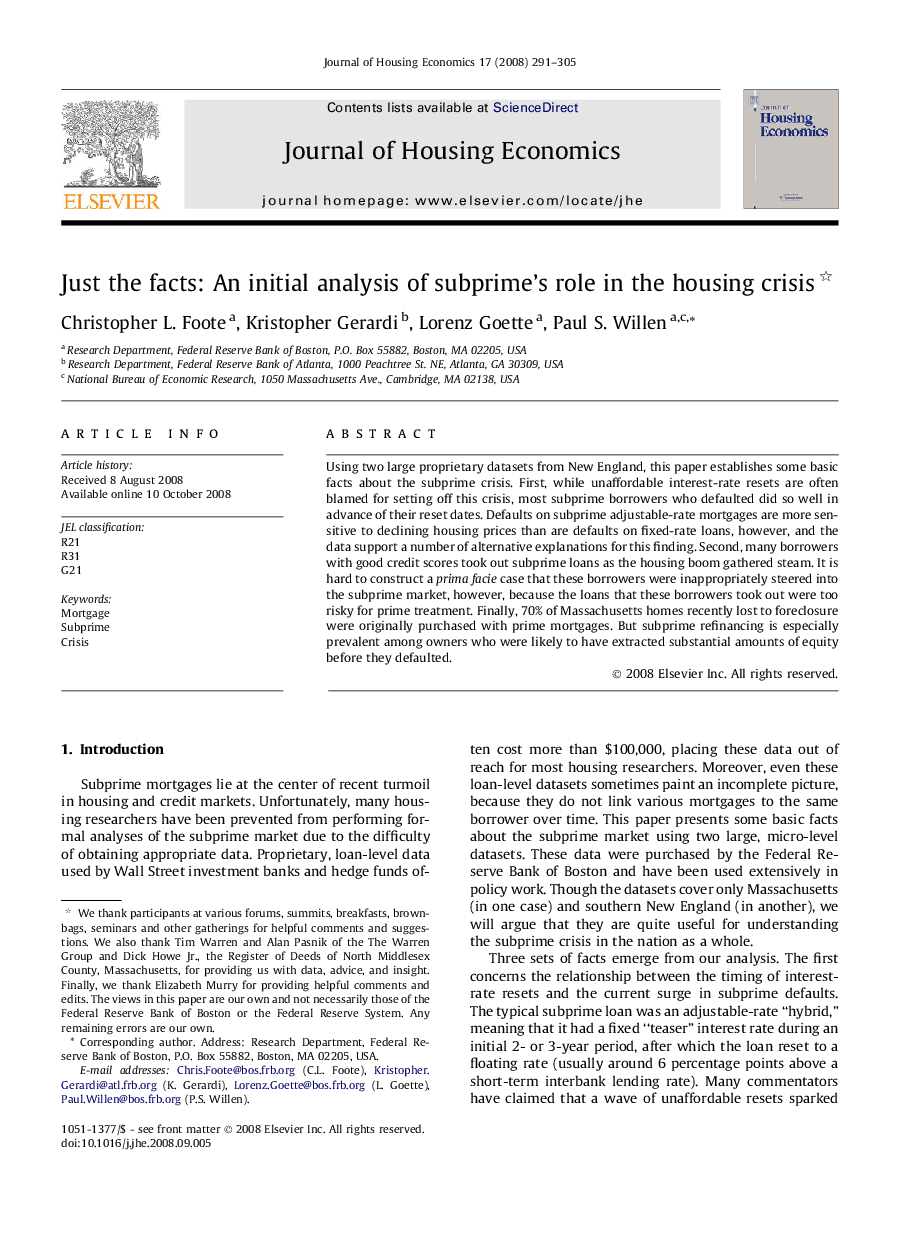| Article ID | Journal | Published Year | Pages | File Type |
|---|---|---|---|---|
| 962211 | Journal of Housing Economics | 2008 | 15 Pages |
Abstract
Using two large proprietary datasets from New England, this paper establishes some basic facts about the subprime crisis. First, while unaffordable interest-rate resets are often blamed for setting off this crisis, most subprime borrowers who defaulted did so well in advance of their reset dates. Defaults on subprime adjustable-rate mortgages are more sensitive to declining housing prices than are defaults on fixed-rate loans, however, and the data support a number of alternative explanations for this finding. Second, many borrowers with good credit scores took out subprime loans as the housing boom gathered steam. It is hard to construct a prima facie case that these borrowers were inappropriately steered into the subprime market, however, because the loans that these borrowers took out were too risky for prime treatment. Finally, 70% of Massachusetts homes recently lost to foreclosure were originally purchased with prime mortgages. But subprime refinancing is especially prevalent among owners who were likely to have extracted substantial amounts of equity before they defaulted.
Related Topics
Social Sciences and Humanities
Economics, Econometrics and Finance
Economics and Econometrics
Authors
Christopher L. Foote, Kristopher Gerardi, Lorenz Goette, Paul S. Willen,
